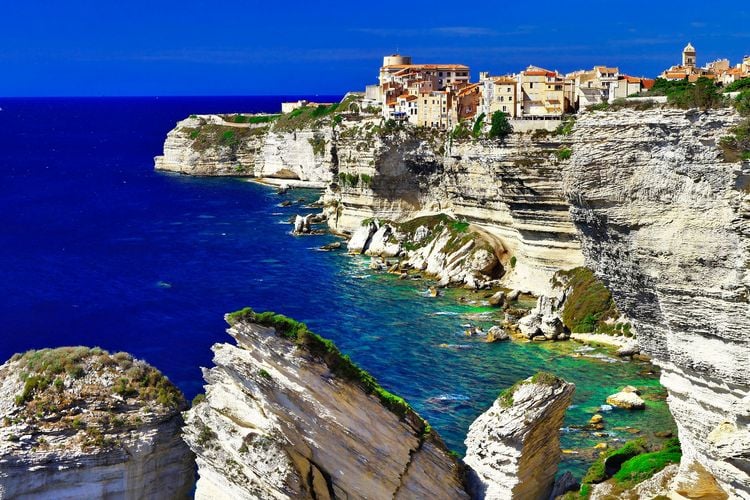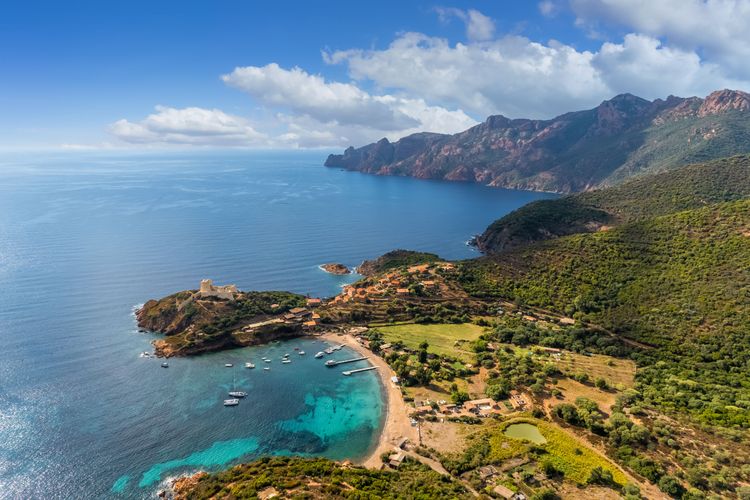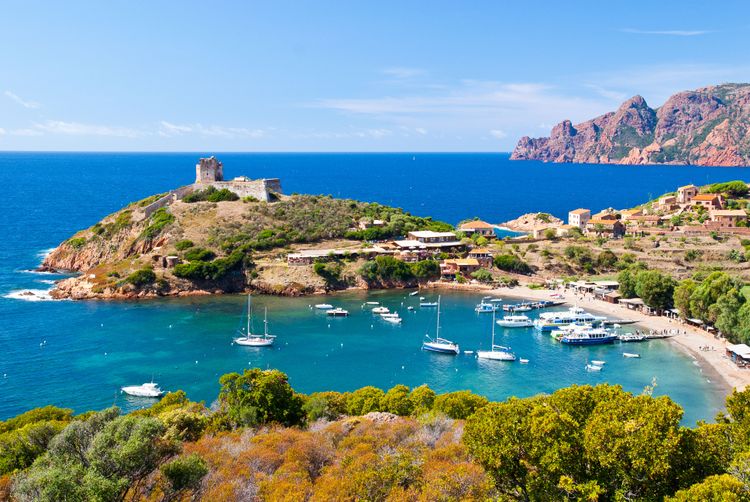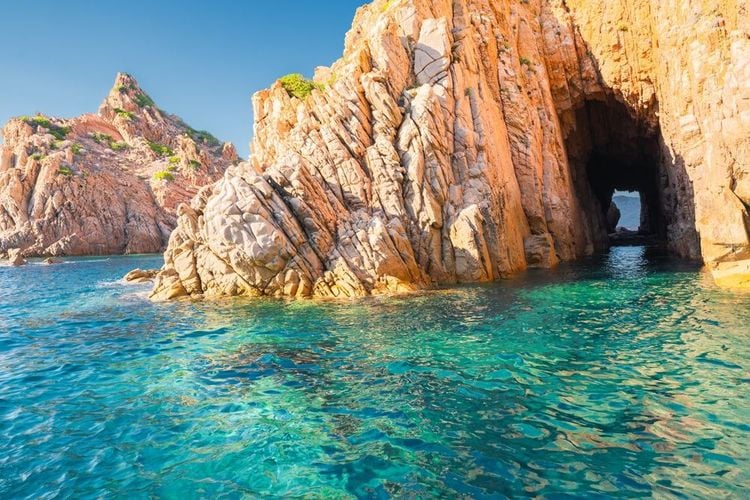The Scandola nature reserve is a marine and terrestrial reserve listed as a UNESCO World Heritage Site and is part of the Corsican Regional Nature Park. Access is therefore strictly regulated, and you can only visit it on a boat trip.

To the north-west of the island lies the Scandola peninsula, a succession of rocky structures that are home to the Scandola Nature Reserve. Initially classified for its landscape interest with its red cliffs of volcanic origin, these 50,000 hectares of reserve were later classified as a national nature reserve before being included on the UNESCO list.
The 919-hectare terrestrial part of the site is home to 33 endemic plant species. As for the fauna, birds are the most important representatives, with colonies of herring gulls, crested cormorants, peregrine falcons and ospreys.
In the 800-hectare maritime part of the reserve, the flora consists of encrusting algae and Posidonia meadows that grow at depths of up to 40 metres. The marine fauna consists mainly of coral, gorgonians, lobsters, groupers, moray eels and red mullet. Bottlenose dolphins can also be seen!

The Scandola nature reserve is a marine and terrestrial reserve listed as a UNESCO World Heritage Site and is part of the Corsican Regional Nature Park. Access is therefore strictly regulated, and you can only visit it on a boat trip.

The best way to discover the Scandola nature reserve is from the port of Porto, a commune in the north-west of the island, between Calvi and Ajaccio. Departures are daily and several times a day. The cruise lasts around 3 hours.
The first stop is Girolata, an old fishing village with a few bars and restaurants. You'll have plenty of time to wander through its pretty little streets and, above all, to climb up the hill to enjoy the panoramic views.
The cruise then heads back towards the reserve and the show really begins! With its 900 hectares of dry land and 800 hectares of seabed, Scandola offers a magnificent coastal landscape shaped by erosion. Of volcanic origin, the red rocks of the ancient caldera plunge into the sea, forming a superb contrast with the intense blue of the water.

Take a boat trip along the cliffs and you'll discover caves and other surprisingly shaped rocks, particularly around Punta Palazzu, where you can admire several basalt organs and tafoni. You'll also pass the island of Gargalu, home to a lighthouse and a Genoese tower.
The Scandola reserve is also home to an exceptionally rich fauna and flora. Keep an eye out for the osprey, Scandola's emblematic bird, and the peregrine falcon.
👉 Departing from the port of Porto, you can also opt for a combined cruise of the Scandola and Girolata nature reserves, as well as visiting the famous calanques of Piana. Allow around 4 to 5 hours for this more complete option.
If you're spending your holiday in Corsica in Calvi or the surrounding area, you can also take advantage of a boat cruise to visit the Scandola reserve directly from Calvi.
From the port of Calvi, sail along the west coast of Corsica towards the reserve. It will take you around 1 hour to reach Scandola. Some boat trips even include stops for swimming and snorkelling in the crystal-clear waters.

Here again, the good news is that you can also take a boat cruise from Ajaccio! You'll start by sailing up the west coast north of Ajaccio to reach the reserve and its sumptuous landscapes. There will also be a 2-hour stopover in Girolata, giving you plenty of time for lunch. The tour continues on to the famous calanques of Piana!
Although it is not permitted to dive in the waters of Scandola, as it is a protected area, it is possible to dive along its borders. The area around the reserve is reputed to be one of the most beautiful diving spots in Corsica.
The clarity and purity of the water make this an ideal spot for admiring the fauna and flora. It's not uncommon to come across gorgonians, groupers and moray eels, as well as armeria soleirolii and the Corsican erodium. You can even discover the wreck of an old coal merchant submerged at a depth of over 20 metres.